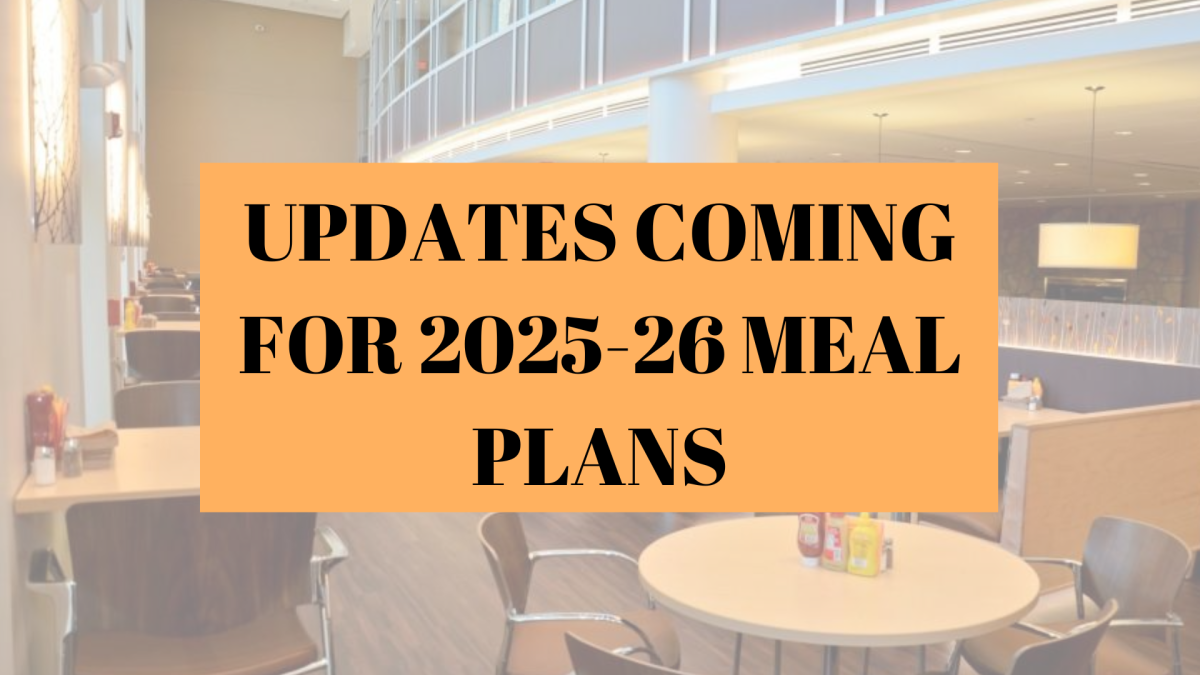Some Marywood meal plans will change this fall, including updated options for commuters and a plan requirement for students living in the Woodlands.
Vice President of the Student Experience Dr. Jeffrey Kegolis announced the changes in an email to students earlier this semester. These changes have been in the works since Gourmet Dining took over on-campus dining services in 2023.
“Over the past two years, feedback regarding meal plans has been gathered from a variety of sources,” explained Kegolis. “These include the residential satisfaction survey, conversations with students about existing meal plan options and anecdotal information gathered from students during the housing and meal plan selection process.”
The three traditional residential meal plans are remaining the same. The PacerGreen plan includes 15 meal swipes per week and 300 dining dollars per semester, while the PacerGold plan allows for 38 swipes per week and 200 dining dollars. The Dining150 plan also returns – it includes 150 swipes and 500 dining dollars per semester.
Students living in the Woodlands apartments wanted a smaller meal plan that differed from the traditional residential plans.
In the past, Woodlands residents have had optional access to the resident meal plans. For the upcoming academic year, a required, specialized meal plan for Woodlands residents will be introduced – the “Woodlands Block.” The Woodlands Block includes 75 swipes and 200 dining dollars per semester, which can be used at all dining locations on Marywood’s campus. Residents will have this plan along with access to their own full-size kitchen located in each apartment.
According to Kegolis, “two-thirds of students living in the Woodlands already currently carry a meal plan.” The Woodlands Block provides a cheaper, middle-of-the-road alternative that fits the needs of Woodlands residents better than the traditional plans did. The addition of the Pacer Food Court, located near the Woodlands in McGowan Hall, provides a convenient spot to use swipes and dollars. Not all residents will enjoy having a necessary plan, however.
“As a resident who lived in the Woodlands and didn’t have one, I would be disappointed if I now had to have one,” explained Woodlands resident Matthew Wygonik. “The only place I would spend it would be at Study Grounds, but still not enough to need a meal plan.”
Two commuter meal plans are also being updated. The Silver plan will include 32 meal swipes and 55 dining dollars per semester and the Platinum plan will include 50 swipes and 55 dining dollars. Executive Chef and Director of Dining Operations Robert Misko believes that commuters are an important part of Marywood’s dining experience.
“We have seen an increase in commuter traffic in the dining hall and other food outlets,” said Misko. “We felt that we needed to focus more on our commuter family and give them more options to participate in meal plans that suit them.”
Although commuter meal plans are convenient for many, some believe that paying up-front for campus dining is not a worthwhile expense.
“I’m only on-campus with gaps big enough to eat during a couple times a week,” said commuter student Carleigh Galliford. “There’s a bunch of good places close to campus, so I don’t want to limit myself.”
Ultimately, Kegolis hopes that these meal plan changes will help him reach his goal of creating a positive and welcoming environment for students at Marywood.
“By introducing new meal plan options, we hope to encourage more students to socialize, engage in campus activities, and foster a greater sense of community. Additionally, by expanding opportunities for shared dining experiences, we aim to reinforce Marywood’s welcoming environment, where students can build friendships beyond the classroom and feel more connected to campus life,” said Kegolis.
Contact the writer: jtbiggs@m.marywood.edu


















